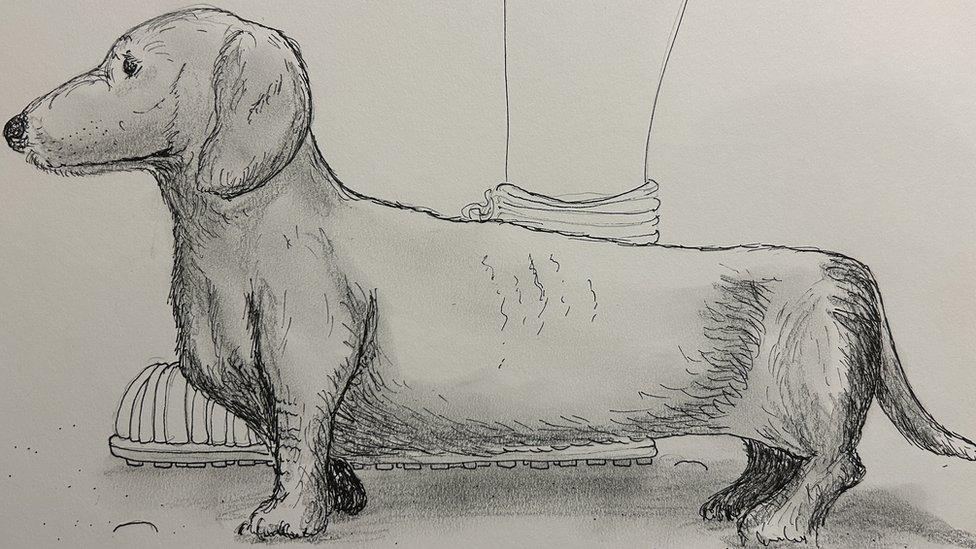Leeds: Roman coffin unearthed at Garforth to be displayed for the first time
- Published
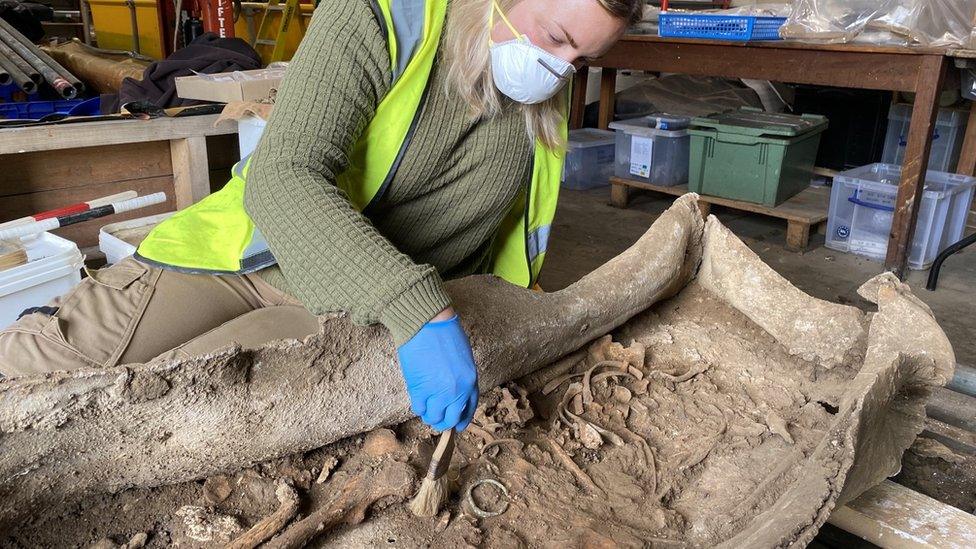
The coffin contained the remains of a woman aged between 25 and 35 and the partial remains of a child
An ancient Roman coffin is set to be unveiled to the public for the first time, after it was discovered in West Yorkshire in 2022.
The lead coffin had laid buried in a field at Garforth, near Leeds, for more than 1,600 years and contained the remains of a high-status woman.
Analysis later revealed it also contained the partial remains of a child.
The coffin will go on display at Leeds City Museum from 3 May.
West Yorkshire Archaeological Services unearthed the burial ground two years ago, finding the remains of more than 60 men, women and children.
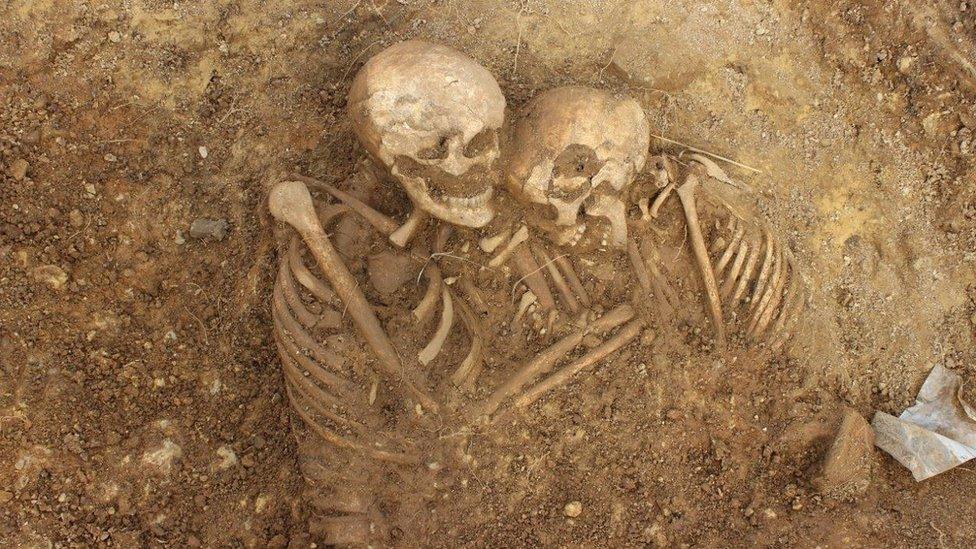
Multiple burials in the same grave were among those found at the ancient cemetery in Garforth
The excavation uncovered the warped coffin, which contained the remains of a woman who was aged between 25 and 35.
She was buried wearing a bracelet, glass bead necklace and a finger ring or earring and is believed to have been of high status and was perhaps a Roman aristocrat.
Carbon dating showed that the partial remains of a child, found in the coffin with her, were buried around the same time, which archaeologists said raised questions about late Roman burial practices in Britain.
The coffin and its lid are currently being conserved and stabilised for display at Leeds City Museum, as part of the new exhibition Living with Death.
Kat Baxter, Leeds Museums and Galleries' curator of archaeology, said: "This is a truly unique and remarkable find which has potentially huge implications for our understanding of the history of early Leeds and those who made their home here."
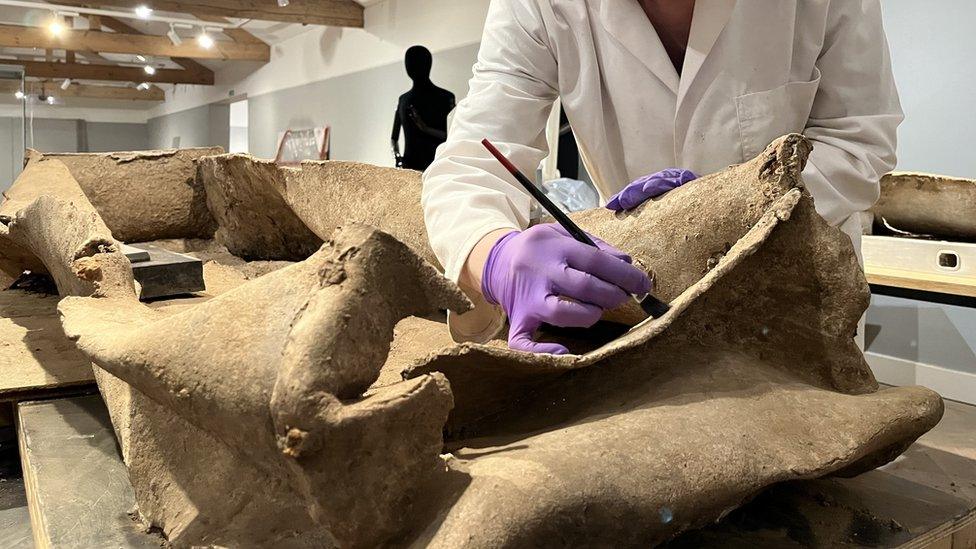
The ancient coffin will be revealed to the public for the first time in May
She added: "The discovery of the remains of a second individual within the coffin is fascinating, particularly as they belonged to a child.
"It poses some interesting questions about how people more than 1,600 years ago treated their dead."
Ms Baxter explained the Roman lead coffin was the only one of its kind ever discovered in West Yorkshire.
"We're delighted to be able to display the coffin so quickly after excavation, and we're looking forward to sharing this amazing piece of history with our visitors," she said.
The exhibition would also include personal stories and objects from across the world, which explore "death, dying and grief".
The exhibition runs from 3 May to 5 January 2025.

Follow BBC Yorkshire on Facebook, external, X (formerly Twitter), external and Instagram, external. Send your story ideas to yorkslincs.news@bbc.co.uk, external.
Related topics
- Published13 March 2023
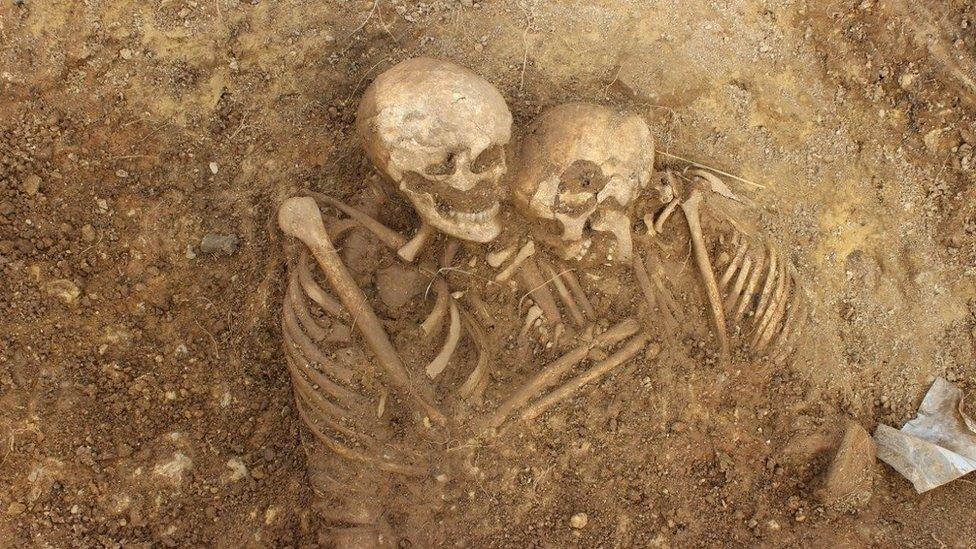
- Published25 July 2023
